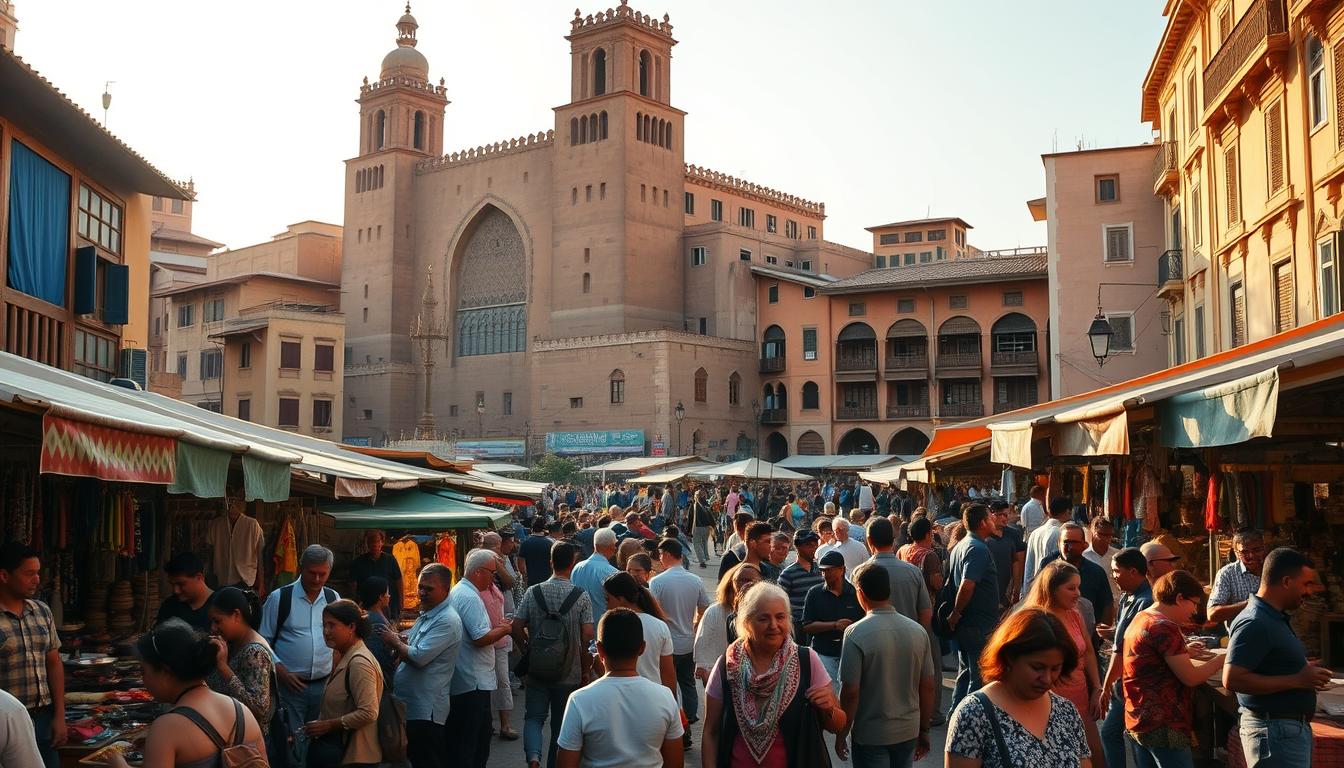How to Experience Local Culture While Traveling
Did you know 72% of globetrotters report feeling disconnected from modern communities despite visiting iconic landmarks? Ancient ruins and museums reveal history, but they rarely show how people live today. True cultural discovery happens where life unfolds: bustling markets, neighborhood festivals, and kitchen tables where strangers become friends.
This guide isn’t about ticking famous sites off a list. It’s about engaging with the rhythm of daily life wherever you go. Think shared meals with new acquaintances, learning folk dances from residents, or swapping stories at a family-run café. These moments create lasting memories no postcard can match.
You’ll discover how to move beyond surface-level tourism. Learn to spot opportunities for authentic exchanges, from seasonal celebrations to casual street conversations. We’ll explore practical ways to build bridges with communities, ensuring your adventures leave you richer in perspective – not just photos.
Key Takeaways
- Prioritize everyday interactions over crowded tourist sites
- Seek out living traditions rather than static exhibits
- Use local gatherings as gateways to deeper understanding
- Build connections through shared activities and meals
- Approach new environments with curiosity and respect
Understanding Cultural Immersion
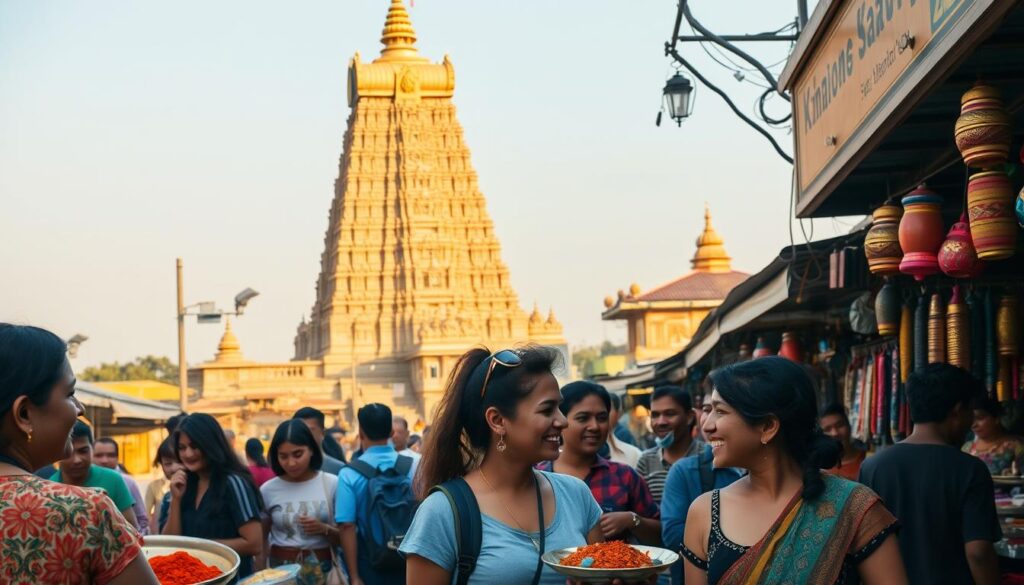
What if your next journey left you with more than just photos? True connection happens when you step into the rhythm of daily life, exchanging smiles with market vendors or learning why a certain dish makes a community proud. This is cultural immersion – not watching from hotel windows, but dancing to street music that makes feet tap and hearts swell.
More Than Just Observation
Immersive travel means rolling up your sleeves. Picture kneading dough with a baker who’s used the same recipe for 40 years, or discovering why a particular fabric pattern tells a village’s history. These moments create understanding no museum plaque can match. As one traveler noted: You haven’t truly known a place until you’ve helped cook its meals.
Why Depth Beats Distance
Surface-level trips show you landmarks; immersive experiences reveal why those places matter. Studies show travelers who engage deeply report 68% higher trip satisfaction. They gain empathy, spot global connections, and often return home seeing their own communities through fresh eyes. It’s not about collecting passport stamps – it’s about collecting stories where you’re neither spectator nor stranger.
This way of exploring transforms brief encounters into lasting bonds. Whether sharing tea with artisans or joining neighborhood games, you become part of the living tapestry that makes each destination unique.
Practical Strategies for Experience Local Culture While Traveling

True belonging begins when you trade sightseeing sprints for meaningful pauses. Slowing your pace lets ordinary moments become teachers – the rhythm of commuters at dawn, the chatter of regulars at corner shops, and the unwritten rules of public spaces.
Moving Slowly to Absorb Daily Rhythms
Spending time in one neighborhood reveals patterns invisible to hurried visitors. Grocery shopping where residents buy produce or reading at the same park bench daily helps you decode a place‘s unwritten codes. As traveler Marisa Cortez shares: I learned more about Lisbon from three weeks making coffee at my host’s kitchen table than from seven guided tours.
Smart Lodging Choices That Open Doors
Where you sleep shapes your access to community connections. Compare traditional hotels with alternatives offering deeper insights:
| Accommodation | Interaction Level | Cultural Insight | Space Type |
|---|---|---|---|
| Hotels | Minimal | Standardized | Private |
| Apartments | Moderate | Neighborhood immersion | Personal |
| Homestays | High | Family traditions | Shared |
Platforms like Homestay.com or local rental agencies often list rooms in family homes. Many hosts enjoy sharing meals or introducing guests to nearby locals. These stays turn addresses into authentic chapters of your journey rather than just sleep spots.
Engaging with Locals for Authentic Connections
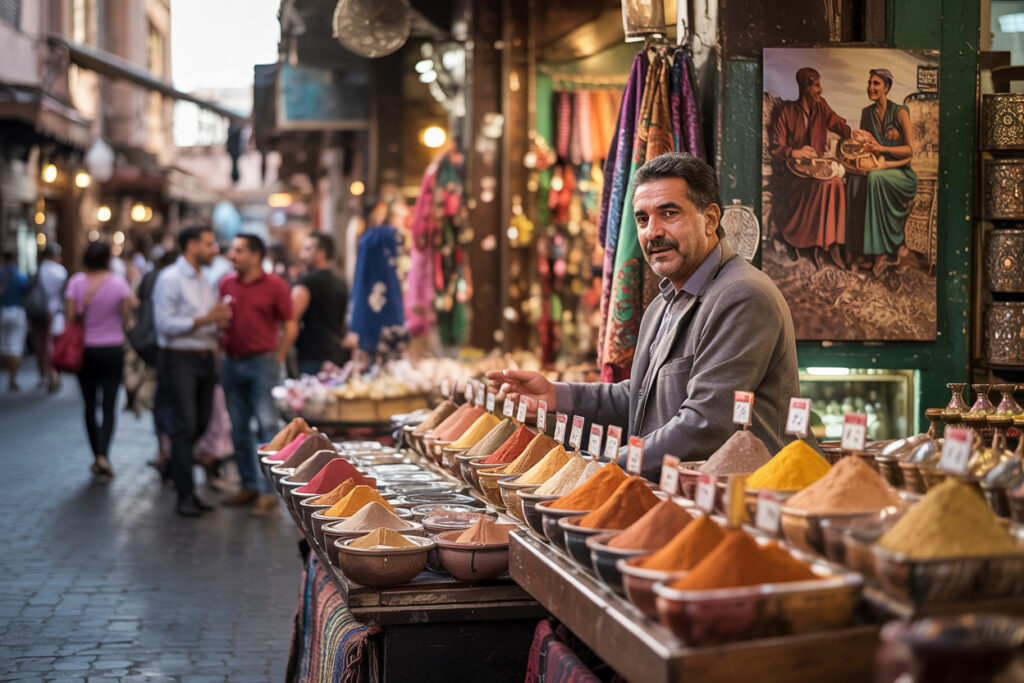
Have you ever noticed how conversations become richer when you listen more than speak? Building real bonds with people requires prioritizing their stories over your own. A traveler in Seoul discovered this by offering writing lessons to colleagues – an exchange that unlocked hidden restaurants and insights into social customs most visitors never see.
Listening as Your Superpower
Active listening transforms brief chats into meaningful exchanges. Instead of comparing traditions to “how we do things back home,” ask open-ended questions: What makes this dish special to your family? or Could you teach me one phrase in your dialect? These approaches show respect and spark deeper dialogues.
Skill-sharing creates natural bridges. Offer photography tips during a walking tour or help prep ingredients at a cooking class. One language teacher recalls: My students invited me to their temple after I helped them practice English – we spent hours discussing spiritual beliefs I’d never read about in guides.
Where Communities Come Together
Neighborhood markets and seasonal celebrations offer perfect settings to observe daily life. Attend a harvest festival where farmers share crop-growing techniques, or join a weekly chess game at the town square. Remember – participation means following lead rather than directing interactions.
Volunteer projects often welcome temporary helpers. Beach cleanups or community gardens let you contribute while learning regional environmental values. As one Bali visitor noted: Planting rice taught me more about island ecology than any museum exhibit. Through humble engagement, ordinary moments become extraordinary experiences.
Discovering Local Cuisine and Artisanal Markets

What if every bite told a story about the land and its people? Food markets serve as living museums where seasonal produce, family recipes, and generations of knowledge collide. These vibrant spaces reveal how geography shapes diets and how communities preserve traditions through preservation techniques like fermenting or sun-drying.
Exploring Food Markets and Street Stalls
Start by observing where locals cluster. Vendors often share samples freely – try pointing to unfamiliar items with a smile. Return to favorite stalls multiple times; regulars might share cooking tips or family stories. A traveler in Moscow became known as “the pickle student” after weekly visits to a grandmother’s stall, gaining insights into regional preservation methods.
Street food spots with long lines usually signal quality. Look for handwritten menus and cooks preparing dishes fresh-to-order. In Bangkok, a 40-year-old noodle cart’s popularity stems from using ancestral spice blends unchanged for generations.
Hands-on cooking classes deepen connections. Learning to roll dumplings or grind spices creates skills that outlast your trip. As one participant noted: My Oaxacan instructor didn’t just teach recipes – she explained how mole sauce reflects Mexico’s history. These shared kitchen moments turn strangers into collaborators, blending flavors with friendship.
Navigating Everyday Life Through Transportation and Wandering
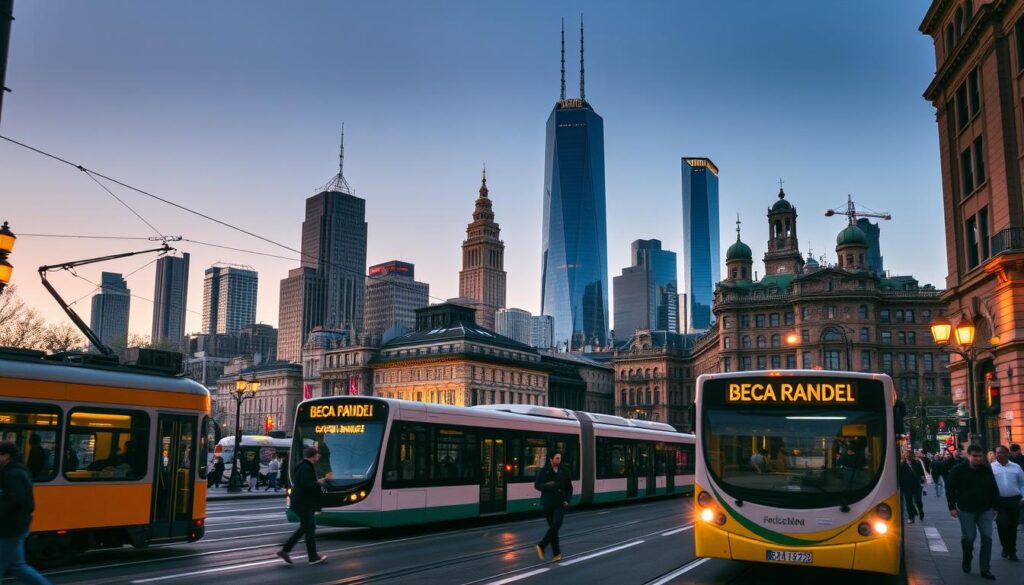
Ever wondered how daily commutes shape a city‘s heartbeat? Public transportation offers front-row seats to authentic urban rhythms. Buses and trains become moving classrooms where you witness morning routines, overhear casual chats, and spot neighborhood quirks invisible from hotel shuttles.
Mastering the Metro Mindset
Start by grabbing a transit card – Tokyo’s Pasmo or London’s Oyster card unlock more than rides. They’re tickets to observing how people navigate shared spaces. Apps like Citymapper help decode routes, but watch how others swipe tickets or offer seats. In Istanbul, ferries crossing the Bosporus serve sweet chai, sparking conversations between commuters.
Walking between stops reveals hidden gems. A Seoul subway station might lead to underground markets selling handmade ceramics. Lisbon’s tram lines pass family-run tascas where fado music spills onto cobblestones. Keep comfy shoes handy – serendipity favors those who wander.
| Transportation Type | Interaction Level | Cultural Insight | Exploration Potential |
|---|---|---|---|
| Public Transit | High | Daily routines | Neighborhood hubs |
| Taxi/Rideshare | Low | Limited | Direct routes |
| Walking | Maximum | Architectural details | Hidden courtyards |
| Tour Bus | Minimal | Scripted narratives | Major landmarks |
Remember transit etiquette: avoid rush-hour crowds in Tokyo, respect quiet cars on German trains, and always offer seats to elders in Mexico City. A traveler recalls: Helping a grandmother with groceries on a Buenos Aires bus led to an invite for Sunday asado. These unplanned moments turn routes into relationships.
Immersing in Festivals, Traditions, and Cultural Events
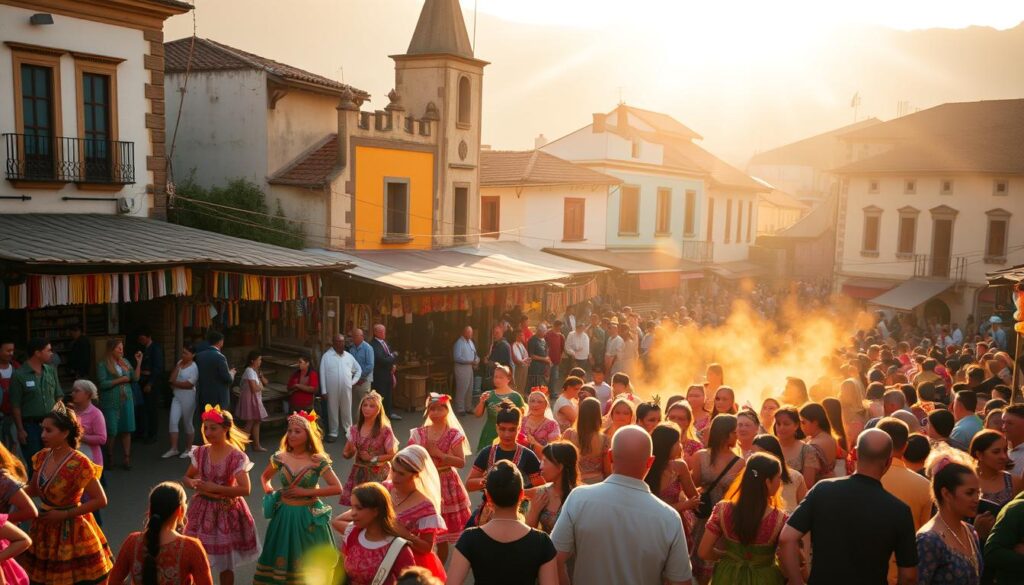
Festivals pulse with the heartbeat of a place, blending ancient rituals with modern joy. In Antigua, Guatemala, entire neighborhoods collaborate on vibrant street alfombras – colored sawdust carpets destroyed by Holy Week processions within hours. This ephemeral art reflects devotion and community pride, reminding us that some traditions thrive through participation, not preservation.
Experiencing Local Festivals and Celebrations
Major festivals often anchor travel plans, but their true magic lies in understanding their roots. Research whether an event marks harvest cycles, historical victories, or spiritual milestones. Dress codes matter – cover shoulders at Thai temple ceremonies or wear red during Ghana’s Homowo festival. As one traveler advised: Arrive early, stay late, and always ask before photographing sacred moments.
Smaller gatherings reveal equally rich stories. Weekly fish auctions in Portugal or moonlit poetry readings in Iran showcase daily life’s artistic side. Check community boards at libraries or cafes – handwritten flyers often advertise grape-stomping parties or artisan demonstrations tourists rarely see.
Uncovering Hidden Cultural Gems
UNESCO’s Intangible Heritage List protects endangered practices like Japanese washi papermaking or Ethiopian coffee ceremonies. Seek workshops where masters share these skills. Building trust with residents often unlocks access – a baker might invite you to shape bread for a village feast, or a musician could teach ancestral drum patterns.
Support preservation by purchasing directly from community cooperatives. Attend lesser-known events like Bhutan’s mushroom festivals or Newfoundland’s kitchen parties where fiddle tunes pass between generations. These living traditions thrive when visitors engage with respect rather than spectatorship.
Respecting Local Customs, Etiquette, and Heritage
Respect isn’t universal—it’s shaped by centuries of tradition. A thumbs-up or direct eye contact might convey warmth in one region but cause offense in another. Doing homework on local customs before arrival shows care for communities hosting you.
When Curiosity Meets Consideration
Research extends beyond Google searches. Visit libraries for books about regional history or watch documentaries featuring actual residents. This groundwork helps spot sacred spaces where photography is prohibited or gestures to avoid. One traveler learned this after accidentally entering a Kyoto temple with visible tattoos—a cultural taboo.
Always ask before snapping photos. In Morocco’s markets, vendors might decline portraits but welcome shots of their crafts. At India’s Golden Temple, covering your head matters more than your camera settings. Respect often means observing first, then participating.
Dress codes reveal much about values. Pack scarves for Middle Eastern mosques and knee-length garments for Southeast Asian temples. In Japan, removing shoes indoors isn’t just practical—it honors cleanliness traditions.
Remember: Some ceremonies remain private. If denied entry to a ritual, view it as trust-building. Your awareness protects privacy while deepening future connections. As Bali locals say: We share what’s meant to be shared.
FAQ
What does cultural immersion mean for travelers?
How can staying longer in one place enhance my trip?
Why choose homestays over hotels?
What’s the best way to connect with residents?
Why visit food markets instead of restaurants?
How does using buses or trains help me learn about daily life?
Should I attend festivals even if they’re crowded?
How do I avoid disrespecting traditions unintentionally?

Sharon Molly is a content creator in lifestyle, fashion, and travel, delivering style-savvy advice and destination insights to inspire confident living. With a background in digital media, she combines aesthetics with practical guidance for modern women on the go.

